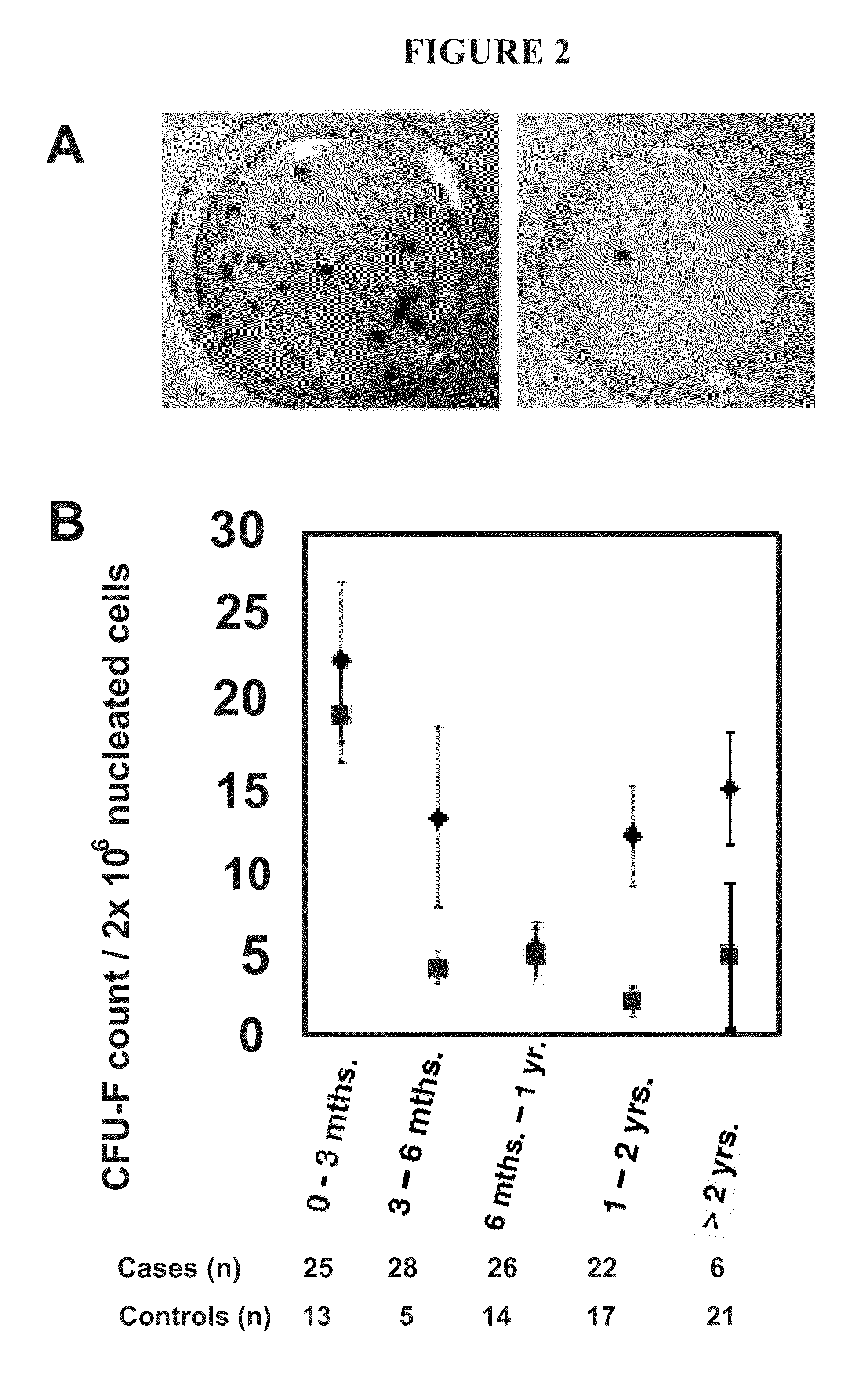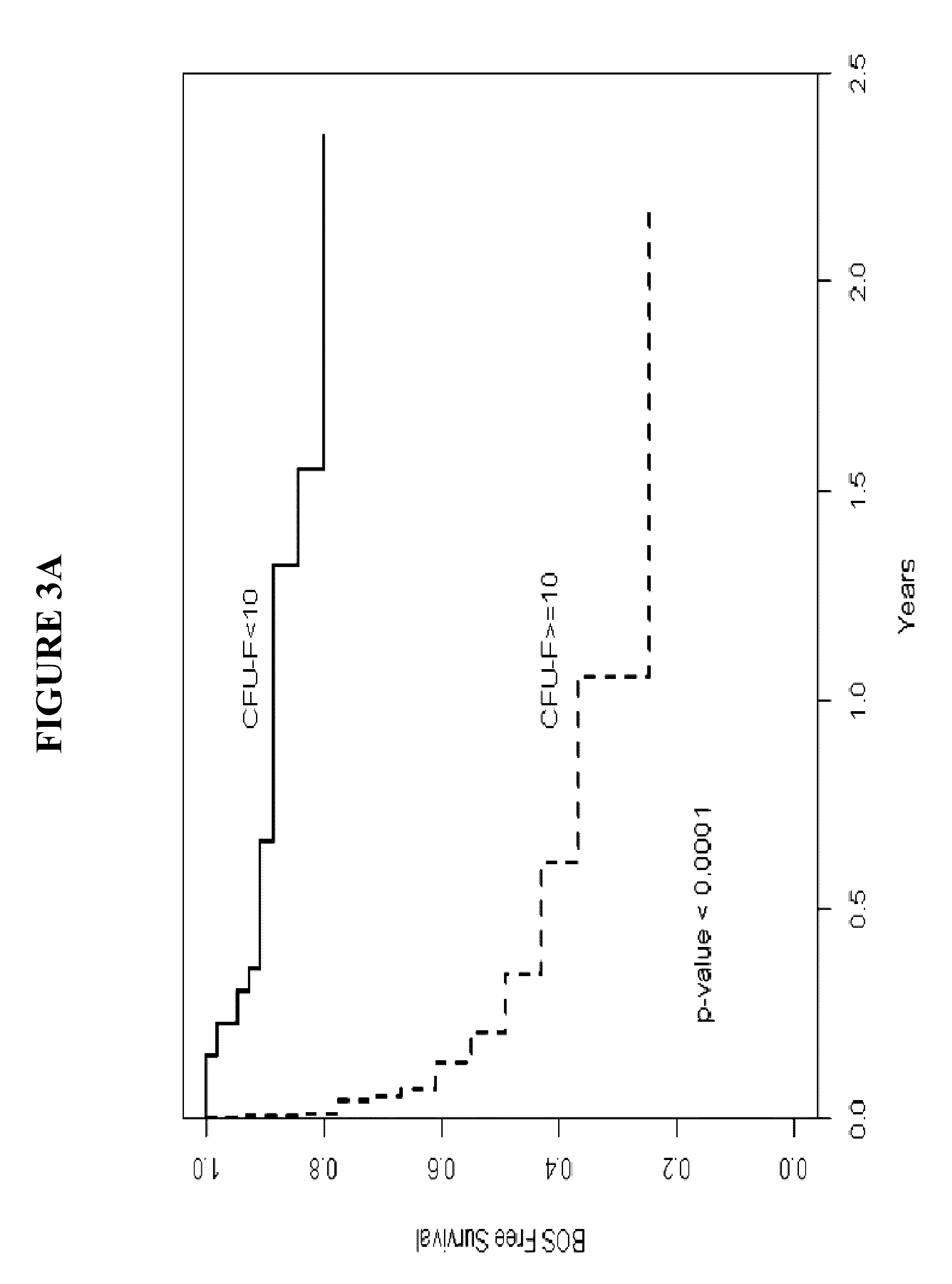Biomarkers for lung disease monitoring
a lung disease and biomarker technology, applied in the field of lung transplant recipients monitoring and treatment, can solve the problems of severe shortness of breath and dry cough, extremely limited treatment options for bos, and long-term survival statistics of transplant recipients, so as to increase the expression of embryonic lung mesenchyme associated transcription factors and improve the effect of -sma positive stress fibers
- Summary
- Abstract
- Description
- Claims
- Application Information
AI Technical Summary
Benefits of technology
Problems solved by technology
Method used
Image
Examples
example 1
Resident Mesenchymal Stem Cells as Responders to Injury and Novel Markers of Rejection in Human Lung Transplants
Methods
[0124]Lung transplant recipients undergoing bronchoscopy at the University of Michigan were eligible for enrollment in the study. The study was approved by the University of Michigan Institutional Review Board, and informed consent was obtained prior to participation. Bronchoscopy and BAL with transbronchial biopsies were performed using standard techniques. BAL samples that could be maintained in culture for 14 days, hence allowing LR-MSC quantification were included in the study. The indication for bronchoscopy was defined as surveillance if it was routinely performed. Non-surveillance bronchoscopies were performed when clinically indicated for factors such as dyspnea, decrement in lung function or follow-up of previous episodes of acute rejection. Bacterial, fungal, and viral cultures were performed on all BAL samples. Transbronchial biopsies ob...
example 2
Resident Tissue-Specific Mesenchymal Progenitor Cells Contribute to Fibrogenesis in Human Lung Allografts
[0148]In this Example, the role of LR-MSCs in post-lung transplant fibrogenesis was investigated, and FOXF1 was analyzed as a surrogate marker for LR-MSCs in cells from bronchoalveolar lavage (BAL) samples.
[0149]Methods
[0150]Isolation of Lung-Derived MSCs and Other Cell Lines
[0151]Mesenchymal stromal cells were derived from BAL of lung transplant recipients by plastic adherence and subsequent expansion of CFU-Fs as previously described (Example 1). Surface marker expression for cells utilized in experiments described herein was determined using flow cytometry. LR-MSCs were negative for CD45 and positive for CD73, CD105, CD90 and CD44. Furthermore, their multilineage differentiation potential was confirmed by inducing differentiation into osteocytes and adipocytes (FIG. 9). Cells were maintained in culture in DMEM with penicillin / streptomycin and 10% FCS at 37° C. in 5% CO2 and us...
PUM
| Property | Measurement | Unit |
|---|---|---|
| Time | aaaaa | aaaaa |
| Fraction | aaaaa | aaaaa |
| Fraction | aaaaa | aaaaa |
Abstract
Description
Claims
Application Information
 Login to View More
Login to View More - R&D
- Intellectual Property
- Life Sciences
- Materials
- Tech Scout
- Unparalleled Data Quality
- Higher Quality Content
- 60% Fewer Hallucinations
Browse by: Latest US Patents, China's latest patents, Technical Efficacy Thesaurus, Application Domain, Technology Topic, Popular Technical Reports.
© 2025 PatSnap. All rights reserved.Legal|Privacy policy|Modern Slavery Act Transparency Statement|Sitemap|About US| Contact US: help@patsnap.com



